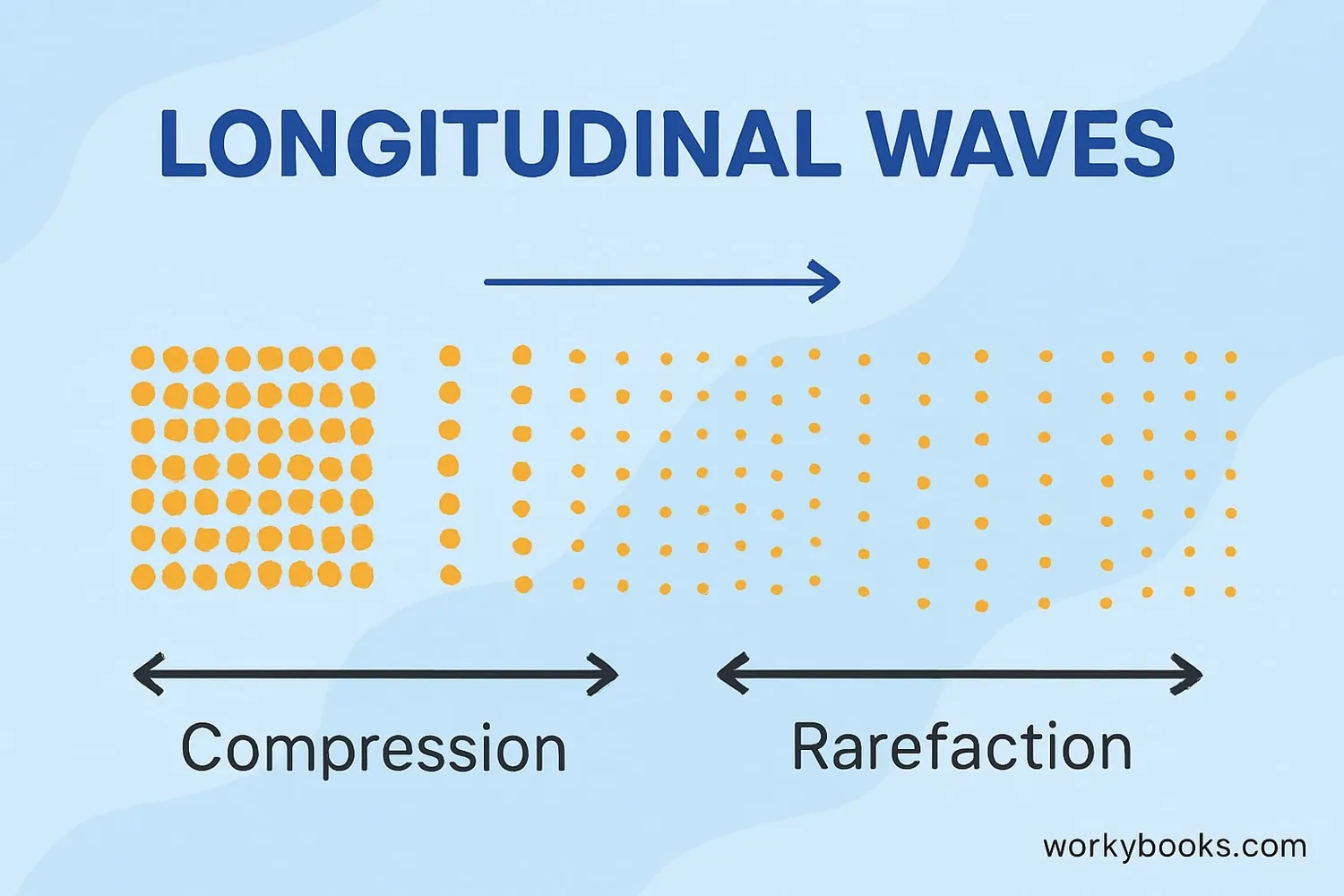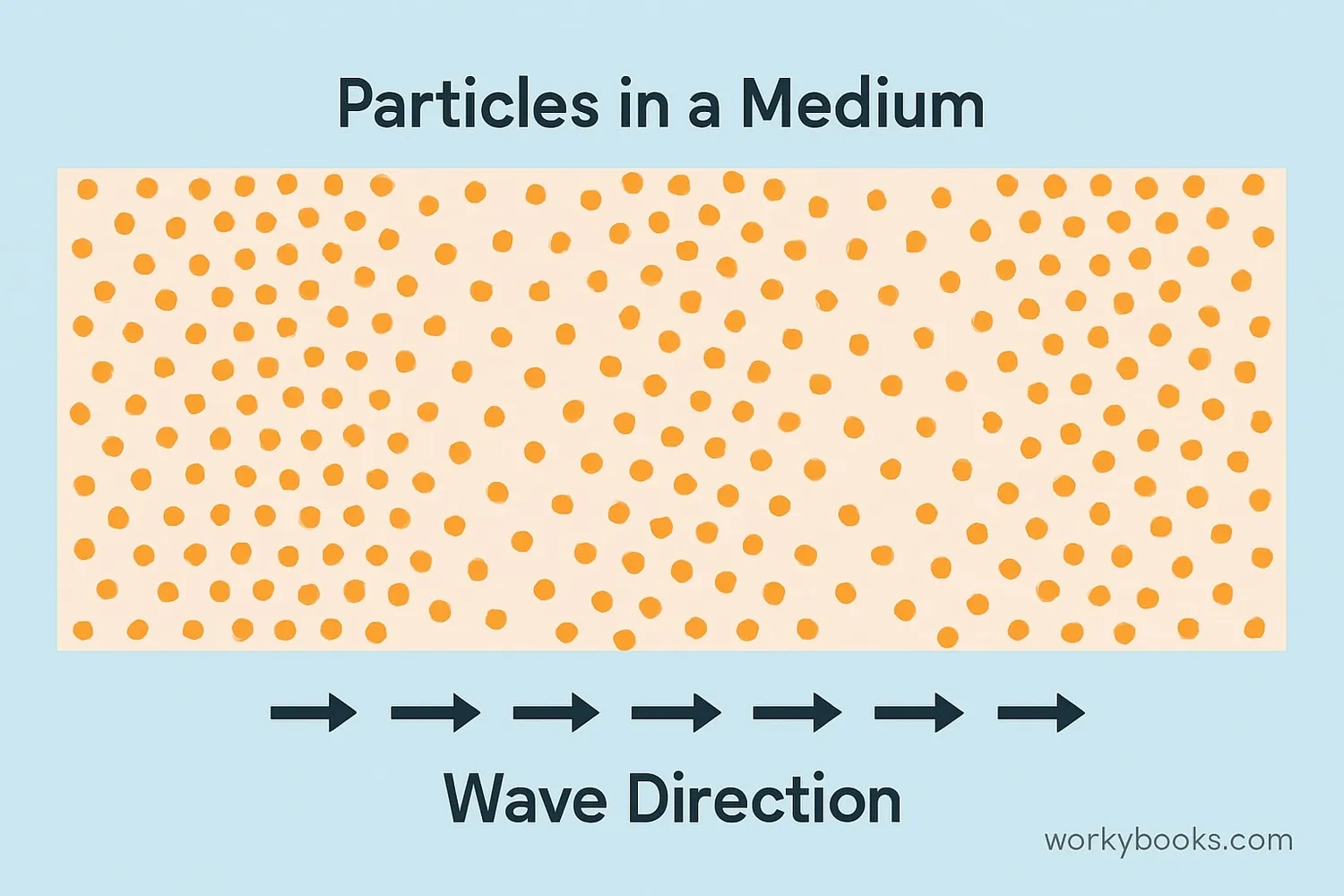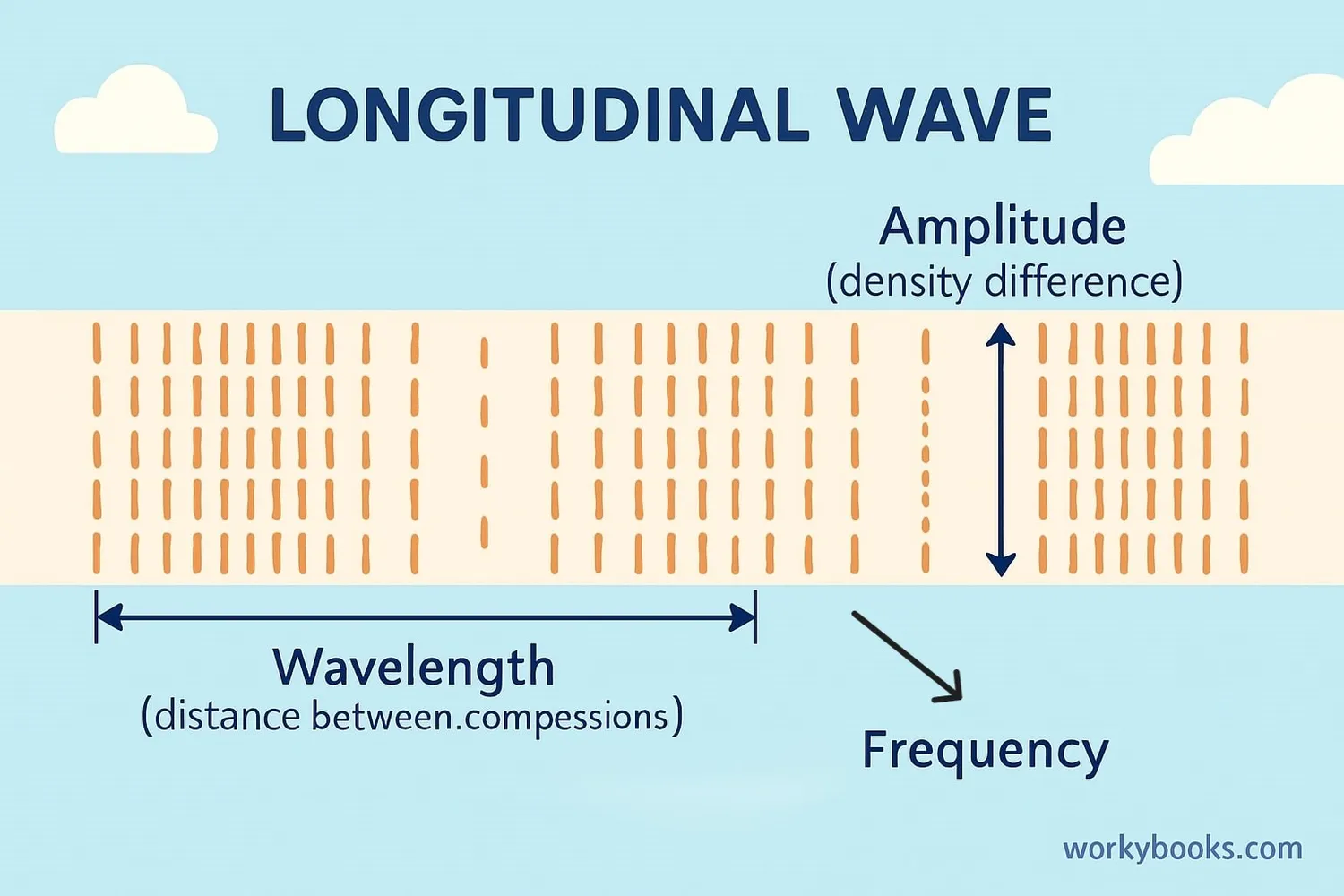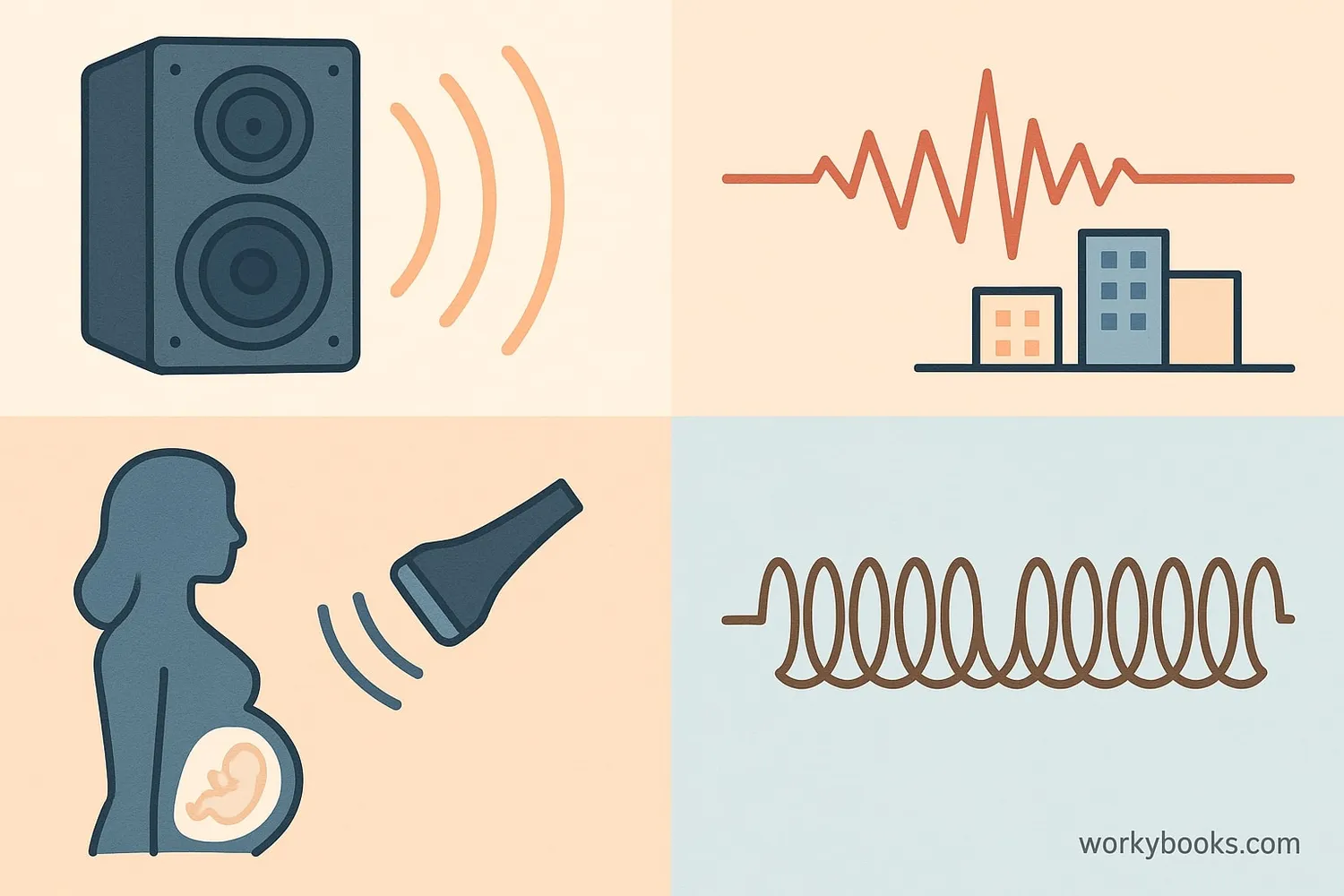Longitudinal Wave - Definition, Examples, Quiz, FAQ, Trivia
Discover how energy travels through compression and rarefaction
What are Longitudinal Waves?

Longitudinal waves are a type of wave where the particles of the medium vibrate parallel to the direction the wave travels. Unlike transverse waves that move up and down, longitudinal waves create areas of compression (where particles are close together) and rarefaction (where particles are spread apart).
Think of a slinky toy: when you push and pull one end, the coils bunch together and spread apart along the length of the slinky. This back-and-forth motion is similar to how longitudinal waves transfer energy through a medium like air, water, or solid materials.
Wave Fact!
Sound is the most common longitudinal wave we experience every day. When you speak, your vocal cords create longitudinal waves that travel through the air to reach other people's ears!
How Longitudinal Waves Work

Longitudinal waves transfer energy through a medium by creating alternating regions of high pressure (compression) and low pressure (rarefaction). Here's how this process works:
Energy Source
A vibration creates disturbance in the medium
Compression
Particles are pushed together creating high pressure
Rarefaction
Particles spread apart creating low pressure
Propagation
The pattern continues through the medium
Energy Transfer
Wave carries energy without moving particles far
The key characteristics of longitudinal waves:
• They require a medium (solid, liquid, or gas) to travel
• Particles vibrate parallel to wave direction
• They transfer energy, not matter
• Sound is the most common example
Medium Matters!
Longitudinal waves travel fastest in solids because particles are closer together, allowing faster energy transfer between particles.
Wave Characteristics

Like all waves, longitudinal waves have specific properties that define how they behave:
Wavelength
Distance between two consecutive compressions
Amplitude
Measure of particle density variation in compression
Frequency
Number of waves passing a point per second (Hz)
These characteristics determine how we experience longitudinal waves:
Frequency → Pitch: Higher frequency means higher pitch in sound waves
Amplitude → Volume: Greater amplitude means louder sound
Wavelength → Speed: Wavelength relates to wave speed and frequency
Real-World Examples

Longitudinal waves are all around us! Here are some common examples:
Sound Waves
Vibrations traveling through air to our ears
Seismic P-Waves
Primary waves during earthquakes
Ultrasound
Medical imaging using high-frequency sound
Sound waves are the longitudinal waves we experience most frequently. When you talk, your vocal cords vibrate, creating compressions and rarefactions in the air that travel to listeners' ears.
Seismic P-waves are the fastest earthquake waves and can travel through solid rock and fluids. They arrive before the more destructive transverse S-waves, giving valuable warning time.
Longitudinal Waves Quiz
Test your knowledge of longitudinal waves with this interactive quiz!
Frequently Asked Questions
Here are answers to common questions about longitudinal waves:
Wave Trivia
Discover some fascinating facts about longitudinal waves:
Sound Speed Champions
Sound travels fastest in solids! Through diamond, sound moves at 12,000 m/s - about 35 times faster than through air. That's faster than the space shuttle!
Whale Communication
Blue whales produce the loudest sounds of any animal at 188 decibels - louder than a jet engine! Their low-frequency sounds can travel thousands of miles underwater.
Medical Waves
Ultrasound technology uses high-frequency longitudinal waves (above human hearing) to create images of internal organs. Frequencies of 2-18 million Hz are used, while humans hear up to 20,000 Hz.
Earthquake Waves
Seismic P-waves (longitudinal) are the fastest earthquake waves, arriving first. They can travel through the Earth's liquid outer core, while S-waves (transverse) cannot.


